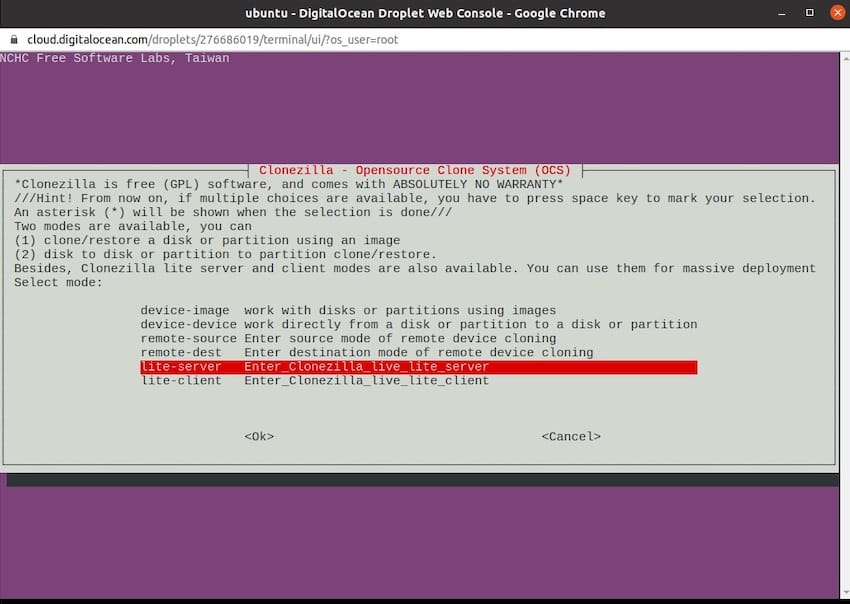How To Install Clonezilla on Ubuntu 24.04 LTS

In the world of data management and system administration, having a reliable backup and cloning solution is crucial. Clonezilla stands out as a powerful, open-source tool that offers robust disk imaging and cloning capabilities. This article will guide you through the process of installing Clonezilla on Ubuntu 24.04 LTS, ensuring you have a dependable solution for safeguarding your data and streamlining system deployments.
What is Clonezilla?
Clonezilla is a free, open-source disk imaging and cloning program that allows users to back up and restore entire disks or individual partitions. It comes in three variants: Clonezilla Live, Clonezilla SE (Server Edition), and Clonezilla Server Edition. Clonezilla Live is designed for single machine backup and restore, while the SE versions cater to mass deployment scenarios.
Key features of Clonezilla include:
- Support for various file systems and partition schemes
- Bare metal backup and recovery
- Multicast support for deploying to multiple machines simultaneously
- Support for LVM (Logical Volume Manager)
- Ability to clone disks or partitions to/from image files
By using Clonezilla, you can significantly reduce system downtime, simplify backup processes, and ensure quick disaster recovery.
Prerequisites
Before proceeding with the installation of Clonezilla on Ubuntu 24.04 LTS, ensure that you meet the following requirements:
- A computer running Ubuntu 24.04 LTS with at least 196MB of RAM (512MB recommended)
- At least 100MB of free disk space
- A stable internet connection for downloading packages
- Administrative (sudo) privileges on your Ubuntu system
- A backup of important data (always a good practice before making system changes)
Preparing for Installation
Before installing Clonezilla, it’s essential to update your Ubuntu system and install any necessary dependencies. Follow these steps:
- Open a terminal window (Ctrl + Alt + T)
- Update your package lists:
sudo apt update - Upgrade your system:
sudo apt upgrade -y - Install required dependencies:
sudo apt install gparted ntfs-3g -y
If you plan to use Clonezilla Live, you’ll need to create a bootable USB drive. We’ll cover this process in the next section.
Installation Methods
There are two primary methods to install and use Clonezilla on Ubuntu 24.04 LTS: using Clonezilla Live or installing it directly on your Ubuntu system. We’ll cover both methods in detail.
Method 1: Installing Clonezilla Live
Clonezilla Live runs from a bootable USB drive or CD/DVD, allowing you to use Clonezilla without installing it on your system. This method is particularly useful for backing up or cloning systems that you can’t or don’t want to modify.
- Download the Clonezilla Live ISO:
- Visit the official Clonezilla download page.
- Choose the stable version for your system architecture (usually amd64 for modern systems)
- Download the ISO file
- Create a bootable USB drive:
- Insert a USB drive with at least 1GB capacity
- Install the ‘
usb-creator-gtk‘ tool if not already present:sudo apt install usb-creator-gtk -y - Launch the Startup Disk Creator:
usb-creator-gtk - Select the Clonezilla ISO as the source and your USB drive as the destination
- Click “Make Startup Disk” and wait for the process to complete
- Boot from the USB drive:
- Restart your computer and enter the BIOS/UEFI settings (usually by pressing F2, F12, or Del during startup)
- Change the boot order to prioritize USB boot
- Save changes and exit
- Run Clonezilla Live:
- Select “Clonezilla live” from the boot menu
- Choose your preferred language and keyboard layout
- Select “Start Clonezilla” to begin using the tool
Method 2: Installing Clonezilla on Ubuntu
If you prefer to have Clonezilla installed directly on your Ubuntu system, follow these steps:
- Add the Clonezilla repository:
sudo add-apt-repository ppa:steven-shiau/clonezilla - Update your package lists:
sudo apt update - Install Clonezilla:
sudo apt install clonezilla -y - Verify the installation:
clonezilla --versionThis should display the installed version of Clonezilla.
With this method, Clonezilla is now installed on your Ubuntu system and can be run from the terminal.
Post-Installation Setup
After installing Clonezilla, you may need to perform some additional setup:
- If using Clonezilla Live, configure your language and keyboard layout when prompted during boot.
- For network-based operations, ensure your network connections are properly configured.
- Familiarize yourself with the Clonezilla interface:
- For Clonezilla Live, navigate through the text-based menu using arrow keys and Enter
- For installed Clonezilla, run it from the terminal with
sudo clonezilla

Basic Usage of Clonezilla
Now that Clonezilla is installed, let’s cover some basic operations:
Creating a Disk or Partition Image
- Start Clonezilla (either boot from Live USB or run from terminal)
- Choose “device-image” to work with disk images
- Select the source disk or partition
- Choose a destination to save the image (local, SSH, NFS, etc.)
- Set compression and encryption options as needed
- Confirm and start the imaging process
Restoring a Disk or Partition from an Image
- Start Clonezilla
- Choose “device-image” mode
- Select the source image location
- Choose the target disk or partition
- Confirm and start the restoration process
Cloning Disks or Partitions Directly
- Start Clonezilla
- Choose “device-device” mode
- Select the source disk or partition
- Choose the target disk or partition
- Confirm and start the cloning process
Remember to exercise caution when performing these operations, as they can potentially overwrite data if not configured correctly.
Advanced Features and Options
Clonezilla offers several advanced features for power users:
- Encryption: Secure your images with password protection
- Compression: Choose from various compression algorithms to save space
- Network cloning: Clone systems over a network using multicast
- Scheduled backups: Use cron jobs to automate regular backups
- Custom scripts: Integrate your own scripts for pre/post-processing
To access these features, explore the advanced options in Clonezilla’s menu or refer to the official documentation for detailed instructions.
Troubleshooting Common Issues
While Clonezilla is generally reliable, you may encounter some issues. Here are solutions to common problems:
- Boot problems: Ensure your BIOS/UEFI settings are correct and the USB drive is properly created
- Image creation failures: Check for sufficient disk space and verify source disk health
- Restoration failures: Ensure the target disk is large enough and not mounted
- Network issues: Verify network settings and firewall configurations
For more complex issues, consult the Clonezilla documentation or community forums.
Updating Clonezilla
To keep Clonezilla up-to-date:
- For installed Clonezilla, update via terminal:
sudo apt update sudo apt upgrade clonezilla - For Clonezilla Live, download the latest ISO and recreate your bootable USB drive
Uninstalling Clonezilla
If you need to remove Clonezilla from your Ubuntu system:
- Uninstall the package:
sudo apt remove clonezilla - Remove the repository:
sudo add-apt-repository --remove ppa:steven-shiau/clonezilla - Clean up any residual files:
sudo apt autoremove
Congratulations! You have successfully installed Clonezilla. Thanks for using this tutorial for installing the Clonezilla OpenSource clone system (OCS) on Ubuntu 24.04 LTS system. For additional help or useful information, we recommend you check the official Clonezilla website.